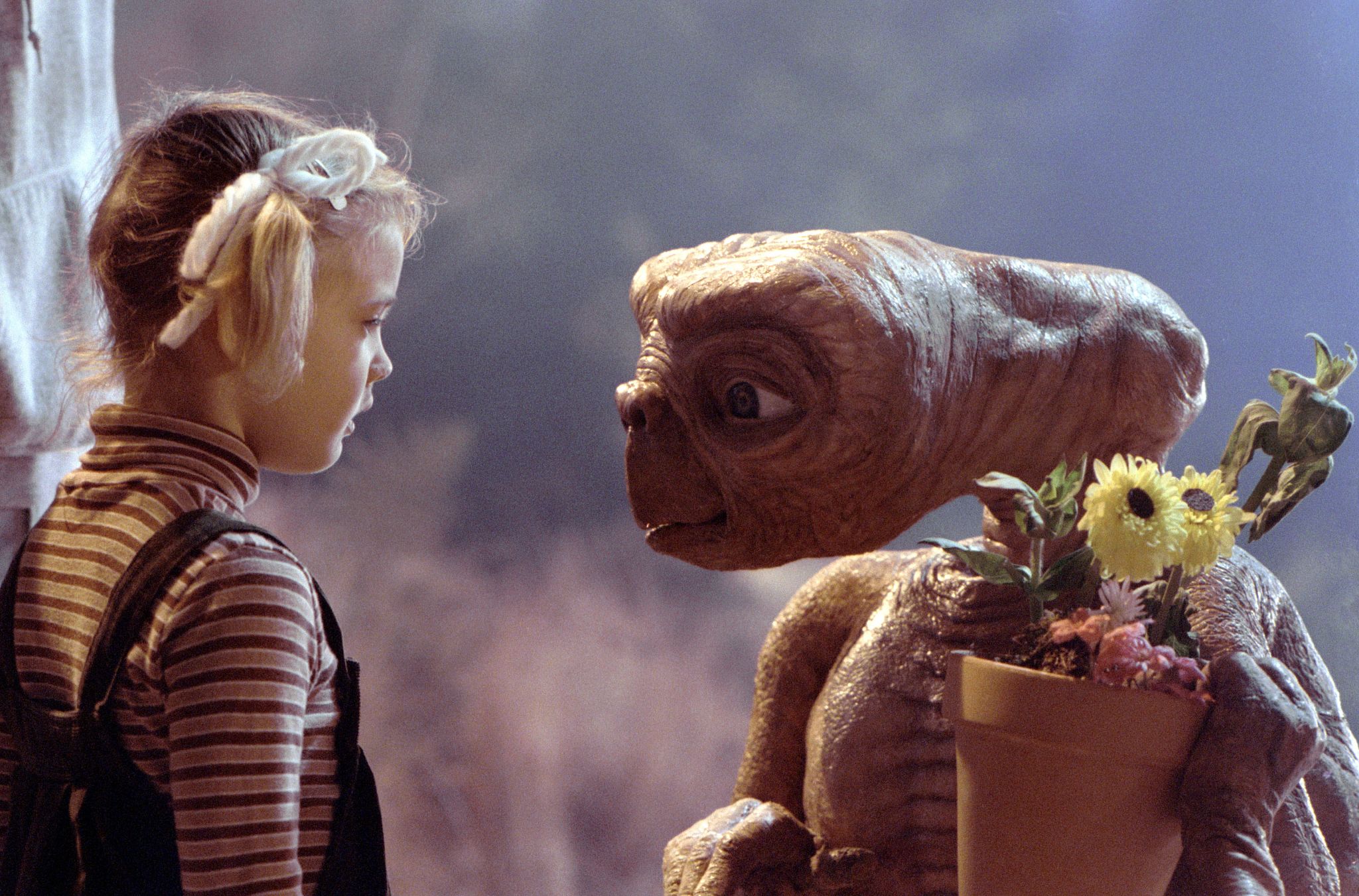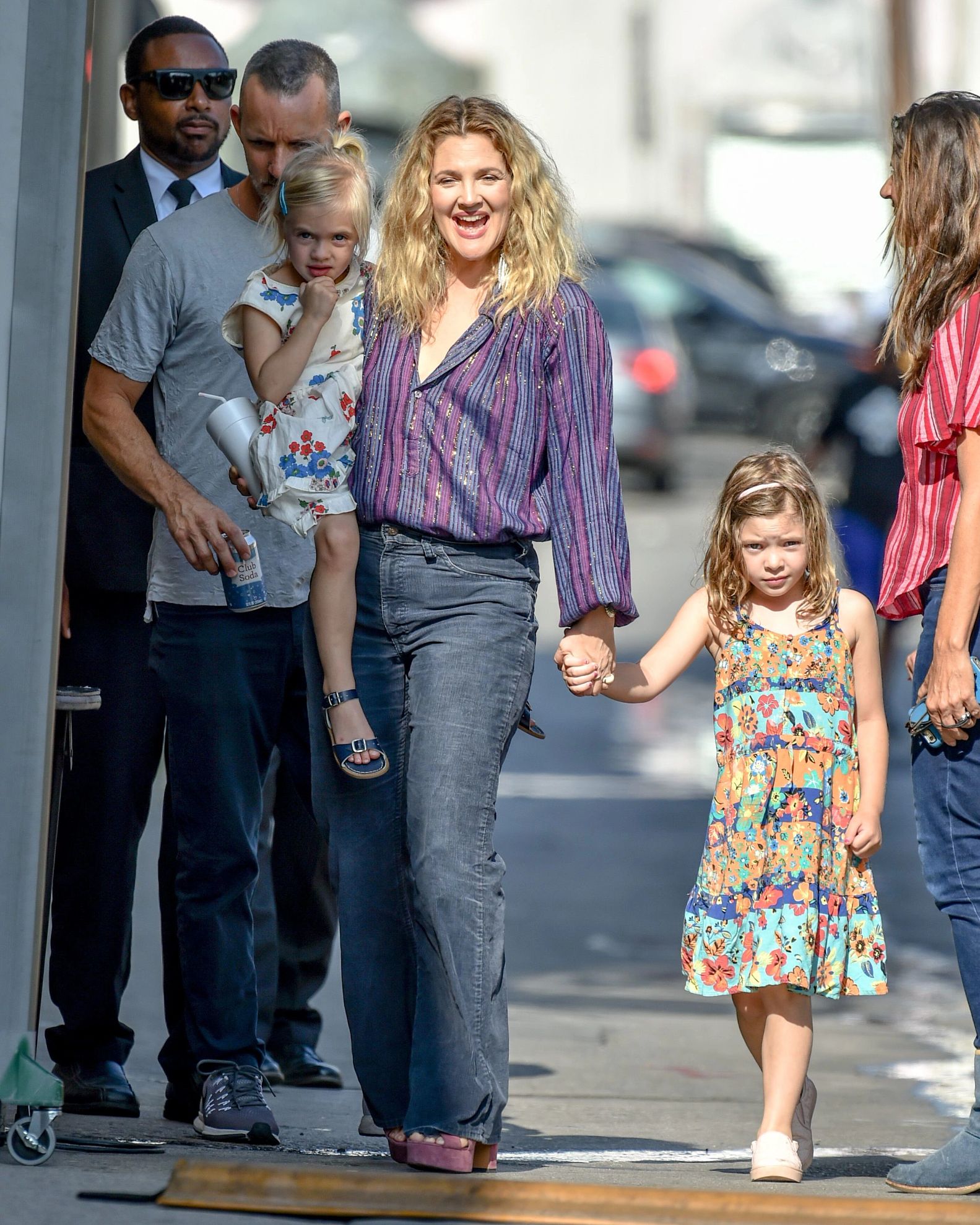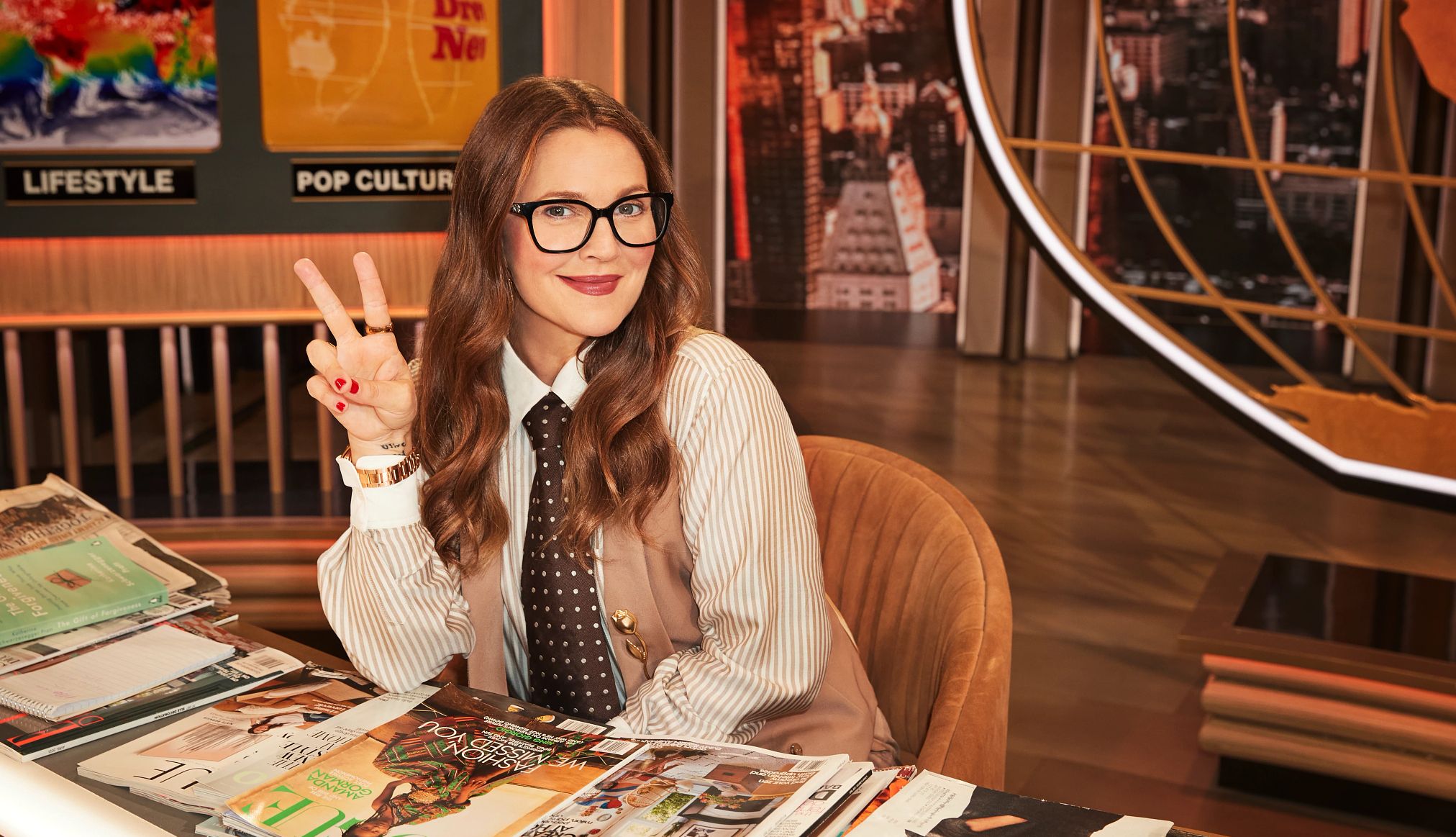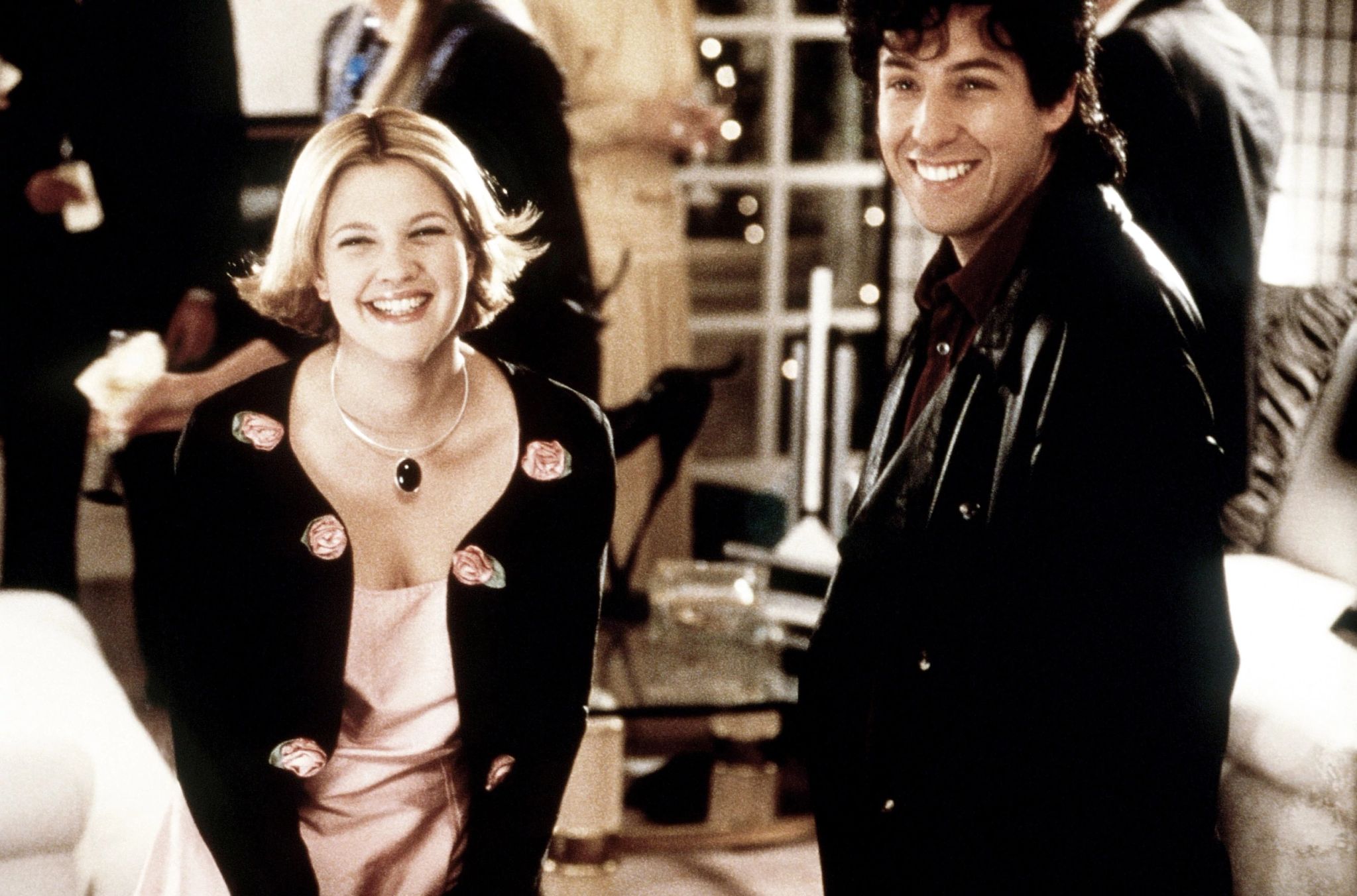AARP Hearing Center
After Drew Barrymore recently finished a gleeful—and one imagines, exhausting—afternoon of dancing, hugging, singing, posing, cooking, noshing and hamming it up with guests while taping an episode of her talk show, The Drew Barrymore Show, the cameras in a midtown Manhattan studio stopped rolling.
But the actress-turned-television host’s most important work as a BFF to millions of adoring fans had just begun. It was time to wander into the predominantly female audience, cameras off, and get into some heavy-duty baring of the soul—in short, girl talk.
“I feel lost,” one woman cried into a microphone, saying she’d barely dragged herself out of bed that morning. Barrymore raced up an aisle—her rescue dog, Douglas, in tow—plopped down next to the woman and threw an arm around her.
What did Drew tell us that didn’t end up in this article?
Members can see exclusive outtakes here. To see Drew’s reaction to her AARP The Magazine cover, tune into The Drew Barrymore Show on Monday, January 27.
“You are beautiful,” she insisted in her signature Valleyspeak lilt. Then she stood up and called out to the other women in the studio. “We’ve got to turn off the nasty critics in our head,” she urged, weaving her way through the group. “I hate that critic! I want to love myself. Don’t you?”
The audience stood and cheered. “Yes! We do!”
And yes, you better believe it. Drew Barrymore—who partied at Studio 54 as a kid, whose troubled teen years spilled onto tabloid covers, who parlayed that bad-girl image into B movies in the early ’90s and posed for Playboy at 19—is today an inspirational, wise sister sage to her followers.


And why not? She has played many roles on and off the screen. For many of us she’ll always be the pigtailed cutie pie Gertie in Steven Spielberg’s iconic fantasy, E.T. the Extra-Terrestrial, in 1982. For others, she’s the big sis or kooky friend from her female-empowerment chick flicks and rom-coms of the later ’90s and early aughts (Never Been Kissed, The Wedding Singer, 50 First Dates, Charlie’s Angels).
Either way, she’s family. And she has been a vulnerable, open book with the public, sharing details of her roller-coaster life in two memoirs (1990’s Little Girl Lost and 2014’s Wildflower) during her journey from then to now.


This month, Barrymore turns 50.
But it doesn’t shock or worry her in the least. In fact, “I’m thrilled,” she says, as we make our way backstage at the CBS Broadcast Center.
“[Grey’s Anatomy’s] Ellen Pompeo was on the show, and she described turning 50 as getting this superpower where you finally stop fretting and driving yourself crazy,” Barrymore says. It’s a superpower she covets after her third marriage—to actor Will Kopelman—ended in heartbreaking divorce in 2016. She’s been juggling work and co-raising their two daughters Olive, 12, and Frankie, 10, ever since.
“This last decade,” says Barrymore, with a sigh, “has been ass-kicking.”
Yet lately she has not only survived, but moved onward and upward. I’ve interviewed her four times over 20 years and am happy to report that despite the years of arse-whoopin’, she’s been restored to what I think of as her effervescent, bubbly core, while also owning a surprising new maturity.
Backstage now, she slips into a purple, green and fuchsia outfit—a whimsical Sex and the City meets Dr. Seuss ensemble. Someone puts on a moody Gigi Perez tune.
“This is my favorite song!” she cries, bouncing in her heels. “Turn it up!”
As she kisses puppy Douglas, Barrymore unconsciously poses, like a consummate professional who has got showbiz pumping through her veins, which of course she does.


Born into the British-American Barrymore acting dynasty (great-uncle Lionel, great-aunt Ethel, father John Drew and many more) Barrymore was a natural, shooting her first commercial (for puppy food) before she was a year old. But her childhood was fragmented and her parents were often neglectful. They split before she was born, and her wild-child, aspiring actress mom, Jaid, raised Drew with few rules and plenty of partying. Her dad—an addict who died in 2004—was mostly absent.
That upbringing, and the sudden, epic success of E.T., led to a drinking problem by age 11, drug addiction by 12, followed by rehab, a suicide attempt, then 18 months in a psychiatric ward at Van Nuys Behavioral Health Hospital.
“I think I thought I was a bad girl,” she says now.
By the time Barrymore was 15, she was out of the hospital and an emancipated minor, living on her own in Los Angeles. She was also a movie star has-been and couldn’t find work, so she “changed the narrative,” she says, and transformed her screen image from cute to dangerous-sexy—in films like Poison Ivy.
“That was fun for a while,” she muses, “then I was like, ‘OK, now what?’ ”
In 1995, at 20, Barrymore took charge of her career and cofounded the production company Flower Films with friend (and, later, wife of Jimmy Fallon) Nancy Juvonen. Together the women have since produced a wealth of box office gold (1999’s Never Been Kissed and two Charlie’s Angels flicks) and the recent hit television show, Santa Clarita Diet, with meaty roles for Barrymore as quirky, lovable, daring women.





































































More From AARP
Drew Barrymore on Her ‘AARP The Magazine’ Cover: ‘It’s So Beautiful!’
Behind the scenes as the star joins what she calls the ‘cool-kids club’ of 50-plus Americans
Alan Cumming: ‘We Overly Worship the Altar of Youth’
'The Traitors’ host talks about why he’ll never stop being eclectic and hosting AARP’s Movies for Grownups Awards
TV Preview 2025: The 20 Shows We Can't Wait to See
See Robert De Niro's 'Zero Day,' Noah Wyle's ER drama 'The Pitt' and more